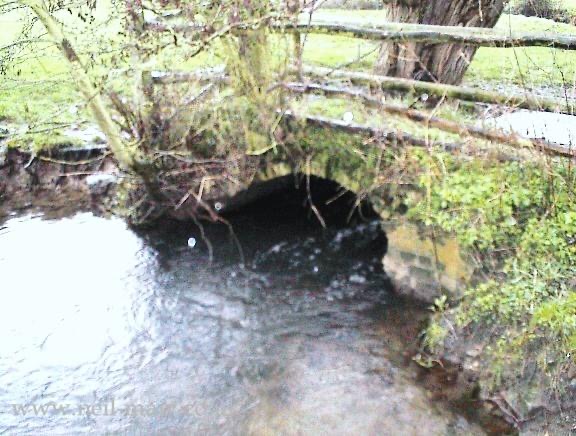Around the middle of the 18th century, medical studies reached the conclusion that bathing oneself in cold water was extremely beneficial. Such bathing was claimed to cure many ailments, from a faulty blood supply to stimulation of the organs. Springs in particular were believed to contain special medicinal properties. John Wesley himself, Founder of the Methodist movement, claimed that, ‘cleanliness was next to godliness’ and extolled the virtues of cold bathing to the extent that it could cure blindness and leprosy. Then were those who understood it to be a more virile thing to do, a move away from the somewhat effeminate 17th century. Others also saw it as pleasant recreation in picturesque countryside, although I suspect those partakers were summer enthusiasts rather than winter.
The Rev Barfoot Colton became Vicar of Shrivenham in 1764, and it seems he too, was swept along with the then modern trend of taking to the waters. In the archives there is a document that shows he built a ‘Cold Bath.’ But whether it was a business venture or a charitable one, I cannot say at present until more evidence comes to light. WRO 11/392 is a lease dated 3 October, 1767, whereby The Hon Stephen Fox Esq, Lord of the Manor, leases land to; The Rev Barfoot Colton, age 31, Samuel Barrington, age 37 and William Barrington, age 8. It refers to, ‘a House and Buildings as the same has been lately erected and built by the said Barfoot Colton together with the site or ground whereon the same now standeth with the use of the Spring of Water adjoining to and running into the same situate, standing and being within the parish and is part of the Manor of Watchfield in a certain place there called Watchfield Common on the West side and near unto a place there called West Mill together with all Ways and Paths etc..’
So where was it? There really is only one place that fits all the evidence so far; right by Pennyhooks Bridge on the Watchfield side (Grid Ref SU 2355 9050). (Picture 50 below) The natural Spring at this location is plentiful and exudes a steady stream of crystal clear water. The Ordnance Survey maps of the late 19th Century bear the name ‘Bath House Spring’ at this spot. Interestingly, the Willington map of 1758 shows no footpath here at all and I suspect that the origins of the footpath were a legacy from when people made their way to the Bath House from the direction of Shrivenham, Watchfield and Highworth. I further suspect that the original bridge that was recently replaced may also owe its origins to Barfoot Colton’s Cold Bath.

Picture 50. In 2011, a small group of us cleared away the fallen Willow trees that had completely engulfed the site. Even though it appeared that very little remained of the original Bath House structure, it was just possible to determine from the geographical layout and artefacts, how it must have worked.

Picture 51. The Spring, completely overgrown with trees and shrubs
It soon became clear that this 'Bath House' was not a lavish edifice. All thoughts of discovering a plunge pool lined with brick or tiles soon dissipated. The Rev Colton and his partners seem to have built it on a fairly limited budget. The fragments of wood that were preserved in parts of the wet muddy areas, suggested that the building itself was of timber construction. At some stage it had a substantial roof as parts of tiles and a complete ridge tile were discovered. The bath itelf was probably just a large wooden tub, which was fed by a sluice and water pipe. By inclining it on a slight angle, the water would have been fed in at the top end by gravity, with a release shutter to drain it at the bottom. A huge stone had been put in place to provide what was probably a clean foot plate to enter the tub. The lease mentioned above, suggests that there was more than one building when it states, 'a House and Buildings.' It would be reasonable therefore to assume that there was another small wooden building for the bathers to disrobe and leave their clothes.
From these discoveries it would seem that this was not an 18th century commericial enterprise. In an age when personal hygene was not fully understood or appreciated, it seems highly likely that it was Rev Barfoot Colton's attempt to give ailing people some hope of survival. The Barrington family involvment would have been considered the right thing to do and add credibility to the useage of the facility. It must have been in existence for some time in order that the Surveyors working for Map-Makers, Ordnance Survey, to have included it a century later. Hopefully, other documentation still exists somewhere which may shed more light on its useage.
Click here to see Photos of the Excavations and artefacts.

Picture 52. Above. The old 18th century Pennyhooks Bridge that was swept away by floods in 2004
Picture 53. Below. The splendid new bridge built by Neil Atkinson
